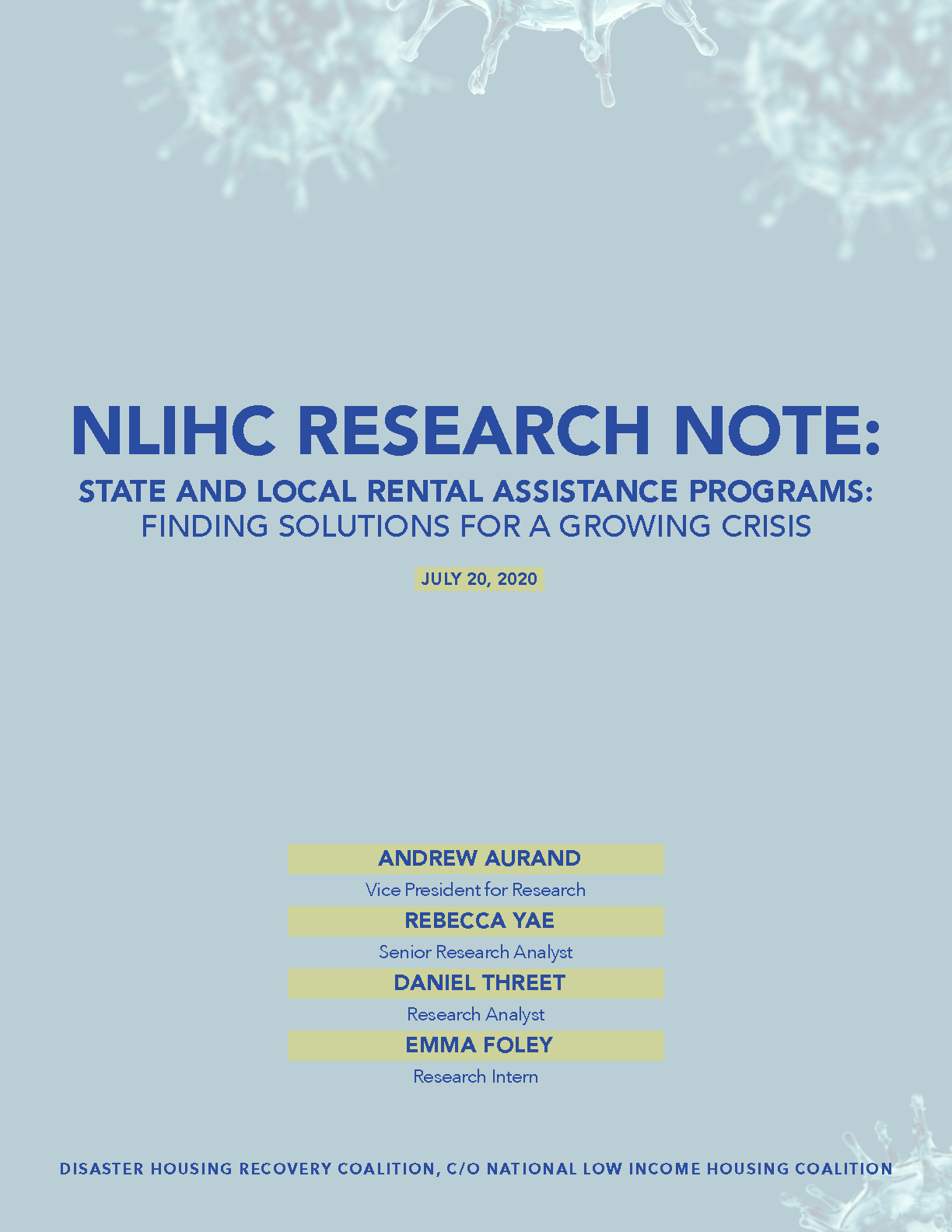NLIHC Releases Research Note on How Rental Assistance Programs Are Addressing Housing Instability during COVID-19
Jul 20, 2020
NLIHC released today a Research Note, “State and Local Rental Assistance Programs: Finding Solutions for a Growing Crisis,” that provides a descriptive analysis of rental assistance programs created prior to and in response to COVID-19. Rental assistance programs created prior to COVID-19 can provide valuable lessons to inform future program design and implementation. An early analysis of programs introduced since the onset of COVID-19 provides insight into the potential and limitations of new rental assistance programs. The coronavirus pandemic has resulted in millions of low-wage workers losing jobs and income and facing significant threat to housing stability. The report finds that though the CARES Act has allocated some funding for emergency rental assistance, more funding is needed to ensure low-income households can remain stably housed in the coming months.
The report draws on two rental assistance databases compiled by NLIHC. The first database contains 88 state and 22 local rental assistance programs that were implemented prior to COVID-19. This dataset is largely based on a survey distributed to housing department staff in all 50 states, DC, and 72 cities. The second database contains 44 state and 151 local programs that have been created or expanded in response to COVID-19. NLIHC staff compiled the database by tracking state and local news media, press releases, and other publicly available documents. These data were supplemented with information from NLIHC’s partners and members.
Pre-existing rental assistance programs vary widely in purpose, program implementation, and target population. For example, some programs only provide a few months of assistance and are intended to prevent evictions and serve households facing temporary financial hardship. Others offer longer-term rental assistance up to two years and serve households experiencing ongoing affordability issues. These findings illustrate a challenge that rental assistance program administrators must navigate: evidence suggests that while short-term assistance programs can serve more households, longer-term programs may provide a more substantial benefit to households by ensuring ongoing housing stability. To ensure low-income households are able to remain stably housed, the report emphasizes the importance of expanding the Housing Choice Voucher program to provide long-term housing support.
Rental assistance programs created in response to COVID are changing rapidly, with new rental assistance programs being introduced daily. Because of this, the 195 enacted rental assistance programs identified by NLIHC vary widely in their stage of implementation. Some programs are still being developed, while others have already dispersed all of their funding. The programs share some common characteristics. Eighty-two percent of the programs, for example, offer short-term assistance designed to provide one-time payments or payments for up to three months. Eighty-three percent of programs require that participants demonstrate financial hardship as a result of COVID-19.
Fifty-seven of the 195 programs have already closed. Twenty programs accepted applications for one week or less before reaching capacity. These statistics illustrate the urgent need for additional federal funding. While proposed legislation offers potential relief, including $100 billion in emergency rental assistance through the “Emergency Rental Assistance and Rental Market Stabilization Act,” Congress must act quickly to ensure households can remain in their homes.
NLIHC continues to collect information about state and local rental assistance programs, especially those created or expanded during the coronavirus pandemic. If you are aware of such a program, please tell us at [email protected].
The Research Note can be accessed at: https://tinyurl.com/yyxfvknm
